Managing Disc Herniation and Alleviating Sciatica: Tips and Tricks 1
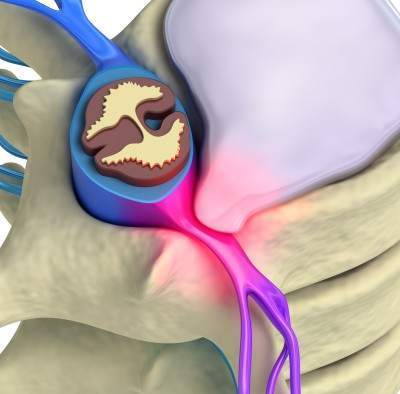
Suffering from disc herniation? Experiencing sharp pains shooting through your buttock, thigh, and leg due to sciatica? If your daily routine is disrupted by the discomfort of disc herniation, there’s hope. Many people find relief without needing surgery. This post will guide you through lifestyle changes to support your recovery from disc herniation. Stay tuned for our next piece, where we’ll explore exercises to correct and stabilize your condition.
Ultimate Guide To Exercises For Lumbar Disc Herniation Relief
Mary’s Story: A Wake-Up Call
Imagine starting your day like any other, performing your routine toe touches, when suddenly you’re hit with an excruciating pain radiating from your lower back down to your toes. This was Mary’s reality when she encountered a lumbar disc herniation, commonly referred to as a slipped or ruptured disc. Such incidents can lead to what’s known as sciatica or radiculopathy, terms doctors use to describe the pain that extends down your leg.
Understanding Lumbar Disc Herniation:
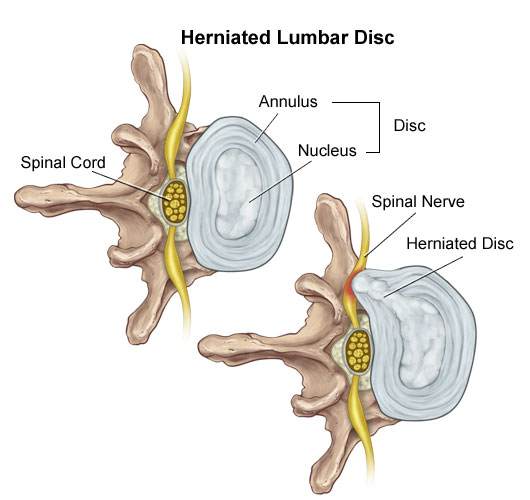
A glimpse into the anatomy of a herniated disc reveals two main components: the tough outer annulus and the softer, inner nucleus. Dr. Stuart McGill likens the nucleus to sticky phlegm. When Mary bent forward, it was akin to squeezing the front of a jelly doughnut, pushing the inner material backwards and eventually causing the disc to bulge and press on a nerve.
The Culprit Behind the Pain:
Mary’s disc herniation wasn’t a sudden mishap but the result of years of repetitive motions like toe touching and prolonged slouching at her desk. These habits gradually weakened her disc, leading to the moment when it finally herniated and impacted her nerve. The lack of nerves within the disc itself means significant damage can occur without immediate pain, explaining why the problem might not be felt until it’s severe.
A Lesson Learned:
The story underscores the importance of posture and the dangers of neglecting spinal health. While the advice to “sit up straight” might seem simplistic, maintaining the natural curve of your back is crucial. Mary’s experience serves as a potent reminder of the long-term consequences of poor posture.
Disc herniations don’t have to dictate your life. By understanding the causes and adopting preventive measures, you can manage and alleviate your symptoms.
Understanding Disc Herniation: Pain, Prevention, and Care
The Unseen Progression of Disc Herniation (see picture above)
- Bulging Disc: Early stages where the disc starts to protrude due to wear and tear.
- Prolapsed Disc: The disc bulges more as it degenerates, but the nucleus remains contained.
- Extruded Disc: The protective layers give way, pressing on nerves and causing pain.
- Sequestrated Disc: The most severe stage, where disc fragments break away, potentially compressing nerves or the spinal cord.
See Also: MRI, CT scan and X-rays: Is an MRI, CT Scan or X-ray Best For My Pain?
Why Me? The Role of Movement and Genetics in Disc Herniations
Surprisingly, your daily habits and genetic makeup play pivotal roles in disc health. While we can’t choose our genetics, modifying daily movements can significantly reduce the risk of herniation. Proper lifting techniques and posture adjustments are crucial first steps.
Simple Changes, Major Impacts: Daily Habits and Exercise
To protect your spine:
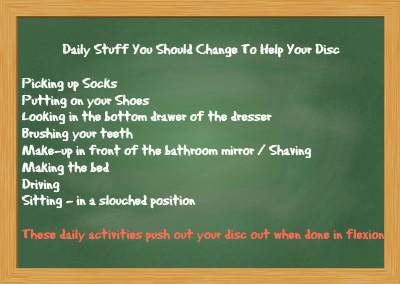
- Adjust Daily Habits: Learn to perform everyday activities in spine-friendly ways to prevent further disc damage.
- Disc-Specific Exercises: Exercises can help reposition the herniated disc.
- Stabilization Routines: Strengthening your core helps maintain spinal integrity, preventing future herniations.
Lifting Techniques: How Weight Lifters Should Lift
Master the Basic Butt-Lifting Technique for Disc Health
- Practice with a long, straight object to ensure your back remains aligned.
- Ensure it touches your butt, mid-back, and the back of your head during the entire motion.
- Squat down and maintain contact with 3 areas and keep the lower back arched the whole time.
- Aim for 30 repetitions to embed this healthy habit into your daily routine for 10 days
Daily Activity Guide: Protecting Your Discs
Then you integrate this lifting technique into everyday life. Initially, whenever you do any of these activities, use the same basic move and you will stop pushing out your disc.
In the beginning, you will need to be conscious each time you are doing any of these activities. To speed things up you can practice each activity like picking up your socks 30 times using the butt lifting technique and it will become even more automatic. You can deepen muscle memory during all of these activities.
For sitting in a chair and driving I recommend that you roll up a Mckenzie Lumbar support roll and put that in the arch of your lower back
Guide for disc herniation daily activities.
- Remember to do all these movements pain-free. Always stop whenever you run into pain with any movement of the spine.
- Disc herniations are linked with long periods of sitting, especially prolonged driving.
- Disc herniations are caused by repeated flexion.
- Prolonged trunk flexion or twisted or bend sideways cause disc herniations.
- Too much lifting, pushing/pulling causes disc herniations
- Vibration while sitting is linked to disc herniations.
- After prolonged stooping or sitting, you should stand. For example, a gardener lifting bags of peat moss after having a prolonged period of rounded lower back, or a driver getting heavy loads out of the trunk after a long drive is not recommended. You should remember to stand for a few minutes before attempting to lift. Studies have shown that ½ hour is even better.
Here are some more exercises that can cause disc herniation.
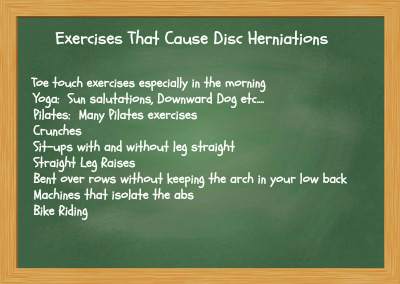
Activities That Put Out Lumbar Disc Herniations
Yes, it’s very surprising that toe touches, Yoga and certain Pilates can cause disc pressure leading to disc herniations. I have personally treated dozens of Yoga teachers with varying degrees of experience. The fact is some of the exercises involved in Yoga are great for helping disc herniations while others directly push the disc out.
Many Yoga Exercises Put Out Disc Herniations
I know many Yogis who have had to stop many of their exercises due to the pain it cause them in various parts of the body, including their disc.
Next week’s article will go over the second and third ways to help your disc. Remember, you need to do #1 “Daily Disc Activities Correctly” first so that your disc doesn’t keep getting aggravated. Then you can move on to next week’s article which goes over #2 Disc Exercises to Push the Disc Back In and #3 Stabilization Exercises help by keeping the disc from coming out by normalizing how your spine moves.
Looking Ahead: Comprehensive Care for Disc Health
Next week, we delve deeper into specific exercises for disc realignment and stabilization techniques, in this article called Ultimate Guide To Exercises For Lumbar Disc Herniation Relief. Remember, starting with correct daily activities is essential to prevent aggravating your condition further.
Tell us what you think in the comments below and like us on Facebook. This Toronto Downtown Chiropractor will answer all questions in the comments section.
Related Categories: Disc Herniation, Low Back Pain, Surgery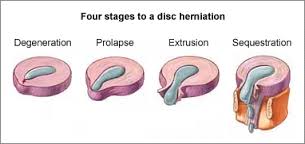
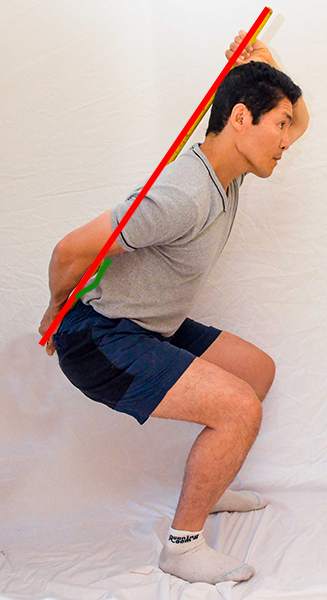


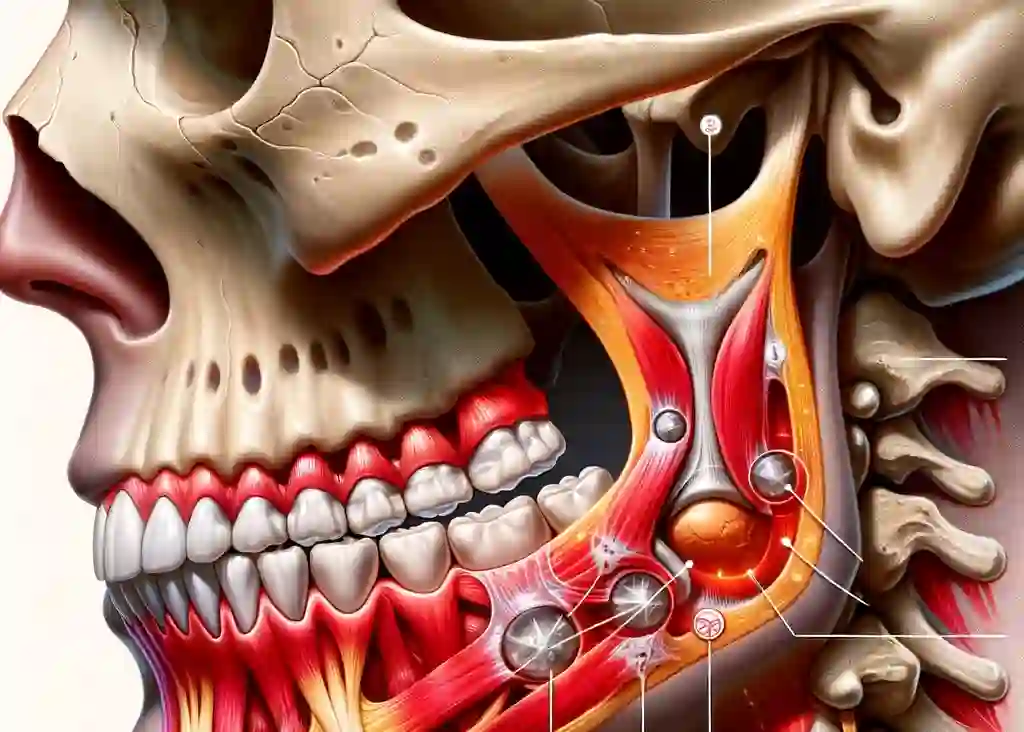

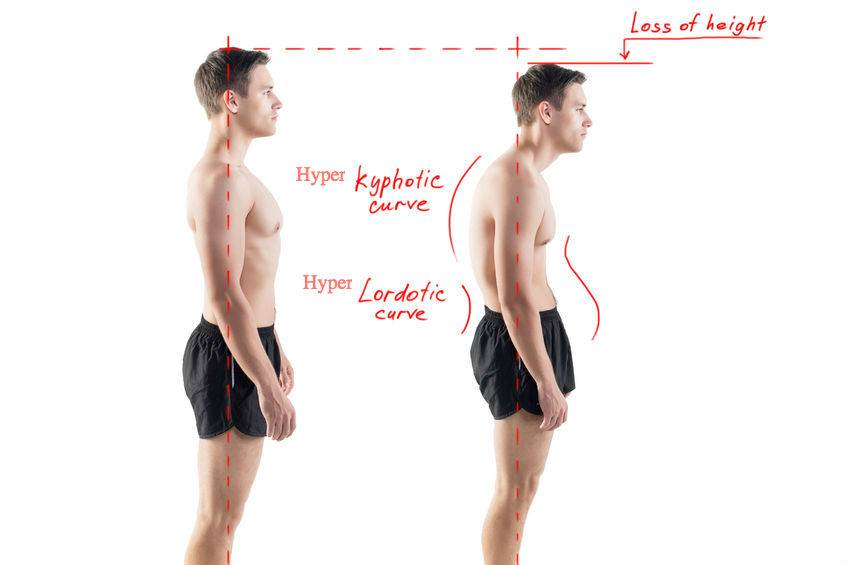
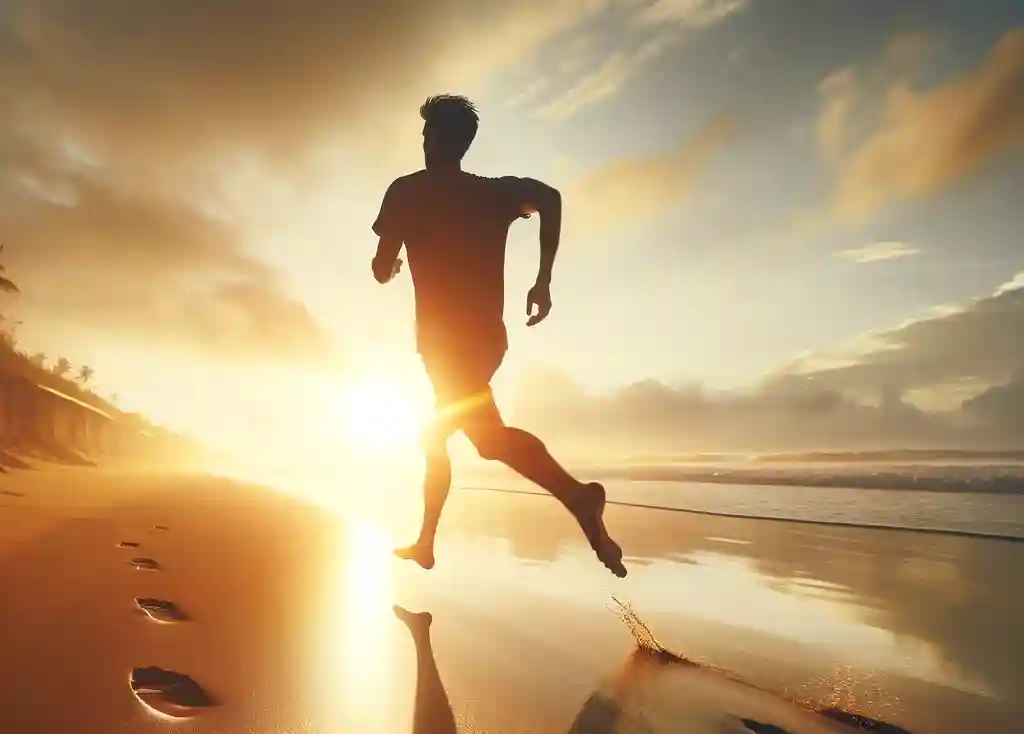
Hi Ken, saw specialists today about my l5s1 herniation, they seem to think my herniation is healed now and the pain and tightness I’m getting( sciatica) is down to scar tissue left after the injury. I have come off the naproxen and managing with aspin which is a massive improvement in my eyes, I have even started running( gently), excercise makes me feel so much better.
The specialist today said I’m in mid range meaning he would put me down as a candidate for surgery, but as I am at the moment he would strongly not recommend it. My question is if I have scar tissue touching the nerve and this is causing my tightening and mild sciatica surely a operation will leave scar tissue which will make me not much better off. Really in two minds, can I stretch to wear down scar tissue or is the reality that I’m not going to get much better now.
Cheers Rob
Author
Thanks for your questions about scar tissue. I think the surgeon doesn’t know that you can get rid of scar tissue with exercises. They are called nerve flossing.
Why don’t you try these exercises. https://www.bodiempowerment.com/sciatica-4-best-exercises/
Hope that helps your L5S1 disc herniation.
Hi Dr. Nakamura. I am 32 and have started having back problems since my pregnancy in 2012. The chiropractor said I have a bulging disc at L2. The pain is so intense and runs down the front of my legs. Chiropractic care seems to help but the problem is I love to do all sorts of exercise videos which I believe is aggravating my bulge. What exercises can be done safely to tone my quads, glutes, hamstrings and abs safely?
Thanks!
Author
Thanks for your question Rachel. First most ab exercises shouldn’t be done, except for plank and side plank. You can also hang from a chin up bar and bring up your legs straight up to 90 degrees. Also most people injure their back with dead lifts and squats (with heavy weights). If you avoid those that should help.
Helpful exercises include squats (no weights), lunges with or without weights and leg extension with or without weights. Step up on a bench are really hard. If they are too easy just add a weight.
Hope that helps your back problem with the bulging disc.
Great, helpful articles.
Thanks
Author
Thanks for your appreciation Nuby. If you have a question, I try to answer the best I can based on available evidence, experience and opinion.
Hope your disc herniation is feeling better.
sir,
My husband suffers from parkinsons disease, he has severe back pain,the doctor says its slip disc ,lumbar.
Please guide me ,show me some exercises ,that can relieve the pain.we cant afford an operation and expensive physiotherapy.
Author
Thank your for your questions Kamal. Why don’t you try these exercsises. https://www.bodiempowerment.com/herniated-disc-part-2-the-best-exercises-for-your-herniated-disc/
Hope that helps your husband’s slipped disc.
Hello Dr Ken,
I am suffering from herniated discs at L4-L5 and at L5- S1 from 3 weeks. I had severe pain in my right leg specially at ankle. There was little numbness in my foot. It was very painful to sit, stand or walk. I took bed rest all these days. Now the pain has reduced a little. When should I start exercising.
Hello doctor,i have a problem of slip disc in L5S1 since 4months.I was undergoing treatment of traction for2mths.After this i had little improvement in my walkingand sleeping style .in fact my sitting sleeping postures has improvrd a lot.But am not able to walk more than a 1or 2kms.After that i feel a little stretch in my legs.And after a rest i walk again ….Ifeel very depressed at times.Right now i have come back from ayurvedic massage in kerala.That has also hrlped me to am extent. I have done your exrrcises also.please guide me as to how more time will it take and what r d chances of my revovery.Thsnks a lot for your valuable time.
Author
Thanks for your question Arti. I am not sure which exercises you are doing as you don’t say. There is only one exercise in this article so I am assuming you are doing this exercise.
Here are some exercises that may help. The exercises in the link below, are for most types of disc herniations but they are not for all types. Also if you have too much inflammation the exercises will not help. Furthermore exercises will not help irreducible disc herniations. I do my best to help but it will not help everybody. https://www.bodiempowerment.com/herniated-disc-part-2-the-best-exercises-for-your-herniated-disc/
Try the exercises here. If they don’t help you may have a anterior disc herniation or you may need an injection to get rid of the inflammation, before the exercises help.
Hope that helps your disc herniation.
Hi Dr. Nakamura:
I have a herniated disc between L3/L4 … I’m working through the pain with acupuntcure and morhine as needed until my appointment with a neuro-surgeon next week. I’m a drummer and have to imagine that this hobby isn’t doing me any favors and probably led to the disc breakdown as I’ve been playing for 30 years without the best posture. My question is will drumming worsen my condition, and are there exercises/stretches that I can do after playing to help neutralize the wear and tear? thanks much!
Author
Thanks for your question Brian. What you need to to is the standing extensions or cobra exercise before, during your break and after drumming. Also you should consider a better posture with a curved arch in your lower back while playing the drum.
Here are the exercises here.
https://www.bodiempowerment.com/herniated-disc-part-2-the-best-exercises-for-your-herniated-disc/
Hope that helps your herniated disc at L3L4 (L34)
Thanks a heap for your reply ken. Its much appreciated.
I have had a sergeon look at my back by a mirical, who thinks the problem is in my upper back. Problem is, I am currently on a remote island without access to medical care at the moment so access to CT scan ect is not possible.
Author
You are welcome Micheal.
To add to the last comment. I get all most equal pins and needles down both legs when dropping my neck from level down to look at the ground.
Hi.
Thanks so much for your article. I have a disk herniation in my upper back that happened a bit over a week ago. Can I start doing these excercises right away? And do the same excersizes in part 2 apply to a upper back herniation.
Author
Thanks for your question Micheal. You need to be careful. There is pressure on your spinal cord when you are bending your neck forward and getting pins and needles down both legs.
I would consult someone first to determine if it is an upper back or neck disc herniation.
Here are some cervical disc herniation exercises if the problem is in your neck.
https://www.bodiempowerment.com/cervical-disc-herniation-best-exercises-help-sore-neck/
Hope that helps your herniated disc.
Hope that
Sir
I am 45 years old and got my MR I done few month back and was diagnosed with posterior left paracentral L2 3 disc herniation with compression on left exiting nerve root.there is no pain in legs and no numbness or tingling, just an uncomfortable feeling every time. I have a fear of breaking my back if I move. I do swimming and it gives me comfort for next 4 hours.It seems that I have to live with the pain. My NE know at times get stiff also. Kindly advise me how can I get out of the bad feeling. Can I play golf as I love the game.
What a great, informative, easy-to-read article!
1. Are temper-pedic mattresses a bad idea if you have a herniated disc?
2. Does one have to have pain running down the thigh all the way to the toes in order to have a herniated disc? (I get a weird/painful sensation thru my buttocks and hip but never through my leg. Makes me wonder if I even have a herniated disc).
Thank you
Author
Thanks for your question Steph and your compliment on the article. I am happy when people appreciate what I do. To answer your 1st question, Temper-pedic mattresses tend to sink more and puts your spine into flexion. Kind of like slouching on a chair except in bed. So I don’t recommend it.
You don’t need to have pain going down into the leg have a disc herniation. If fact when you do MRI of normal people with no pain, 30% of 30 year old people have disc bulges and some of them disc herniations. (I think I wrote that in the article.) Pain in the hips and buttocks can be a pinched nerve related to a disc herniation. It can also be a hip problem, piriformis syndrome. Sacroiliac irritation etc… Those being some of the more common reasons to have pain in the hip and the buttock.
Hope that helps your herniated disc. (possible)
Hello! Thanks for such an informative article. I never realized that toe stretches could cause problems! This article focuses on exercises for lower back. What about cervical? I have 4 herniated discs in my neck. One is a paracentral disc extrusion (5mm). I have had worsening widespread nerve pain, despite heat, ice, physical therapy, TENS unit.. etc. I am supposed to be consulting with a Neurosurgeon. I am 39 and a mom of 6, but feel like I am trapped in a 70 year old’s body. I have always been fit and eat a very healthy diet, but am finding it difficult to do any exercising anymore. Any recommendations for cervical strengthening/ stretching/ posture?
Thank you so much
Author
Thanks for the question Ondreea. For cervical disc herniations you should try this https://www.bodiempowerment.com/cervical-disc-herniation-best-exercises-help-sore-neck/
You have to be careful though you can aggravate your neck and it can make you worse temporarily. If the exercises give you sharp pain or pain that increasing gets worse or pain for more than 1/2 hour after the exercises the exercises are not for you.
Hope that helps your cervical disc herniation.
Hi there, cheers for your article, been suffering now for four months, I feel I’m improving in the last week but am still getting sciatica more in the morning than afternoon, a massive improvement from last week when my buttocks felt like someone was putting a red hot poker into them and the boss telling me to go to A&E.
I have seemed to improve since doing a few Yoga moves, these are:
Bridge pose, but only holding for 2 secs
Child pose, which I think is doing great.
I also do a number from your articles,
Is the two exercise’s I have mentioned beneficial to my condition and do you think it’s worth me getting a MRI scan to see the how bad my herniation is?
Cheers Rob
Author
Thanks for your question Rob. Child pose and Bridge are both helpful for some types of lower back problems that cause sciatica. I would keep doing the bridge pose but child pose can cause some people problems if they have a disc herniation. I would concentrate more on the sphinx pose like in this article.
https://www.bodiempowerment.com/herniated-disc-part-2-the-best-exercises-for-your-herniated-disc/
This is an article for sciatica.
https://www.bodiempowerment.com/sciatica-4-best-exercises/
Hope that helps your sciatica
Hello Doctor Ken,
For many years now I’ve had a herniated L5 S1 disc, which occasionally flairs up but I’ve learned how to live with it and avoid certain motions that aggravate it (bending forward & then quickly rising back up; extending too forward while bending & trying to lift something heavy). Once I feel it go, I know I’m going to have a painful tight knot in my lower back for about 5-7 days, and then it’ll get better. I’ve never been much of an exerciser and always have had a “gut”, but it’s been getting worse in my middle aged years (my abs and stomach muscles look like they’re spilling over my belt line). I really want to do something about this. Are there any particular exercises I can do to help tone up the belly that’ll minimize aggravating my disc?
Author
Thanks for your question Dave. Why don’t your try these exercises.
https://www.bodiempowerment.com/herniated-disc-part-2-the-best-exercises-for-your-herniated-disc/
Hope that helps your herniated L5S1 Disc.
Dr. Ken, thank you so much for an amazing website and detailed information. I herniated my l5s1 golfing and have seen top spine surgeons and physical therapist and it’s exactly what you have confirmed. Just wanted to thank you for the concise info. I’ve done loads of research and this is the best site I’ve seen thus far with accurate data. Your patients are lucky to have such a caring physician.
Author
Thanks for your kind words John, I really appreciate it.
Hi Dr. Nakamura,
The internet is such an excellent place. I have been having shooting pain from my right butt, down to front of right leg and to the foot. From the x-rays, one side of hip to shifted up (right) and right leg is longer than the left by 1/2″ – L4 is shifted up hitting a nerve and from the symptoms – she thinks it is a bulging disc – and yes, foward bending really bothers me – She had ask me to stop doing any back and front squats or anything that compresses the spine. What do you think? She said yoga and walking is excellent. I am hoping i can do circuit classes with light weights. I am glad I found your site, it is giving me a lot more information to help with my healing process. Will massage therapy help and what should they do?
Good evening. What a very interesting and helpful site you have and so kind of you to share your knowledge… A couple of years ago I was diagosed with S1, S2 herniated discs was very painful but now only twinges when I do crazy things like spending various hours pulling up weeds or similar. I’ve recently returned to spinning classes and not sure if related but I have pain in my coccyx when sitting on hard surfaces or when I stand from sitting. could this be another herniated disc (to be honest, I’m not sure just how many in the sacral area there are to be herniated!), or could it be something else. I am very reluctant to give to give up my spinning classes as they give me such energy! Thanking you in advance for your kind opinion.
Author
Thanks for the questions Luisa. Spinning often puts in the arrow position (racing position with your back flexed far forward). For most kinds of disc herniation this is not helpful. What you can do is keep the arch in your back while spinning. You don’t need to give it up. You just need to change the way you spin.
There usually isn’t a disc between S1 and S2 but there are some people with a disc. Usually the vertebrae are fused from S1 to S5 to form a pelvic bone called the sacrum.
Hope that helps your herniated disc.
That’s brilliant news Dr Nakamura and very kind of you to take the time to answer my query. I shall definitely aim to keep the curve! Thanks and best wishes from the Canary Islands, Spain.
Author
I think you are are the first one to comment from the Canary Islands Luisa. I hope I can help people from all around the world.
Hi Doctor Ken,
Recently I had a muscle spasm at my lower back (due to weightlifting), few weeks after that, the pain went away, but, 2 weeks after that, I felt like a sharp pain at my right buttocks, leg and knee. I cannot stand for too long. My friend who practice medicine said, I might suffered slipped disc. I’m planning to meet orthopaedic specialist next week. The question are. 1. Is it possible to recover without a surgery 2.
If I want to still practice my weightlifting routine (if possible), what would be the best routine for me. Thanks.
Author
Thanks for your question Azwan. The good news is that you can recover from a slipped disc with these exercises.
https://www.bodiempowerment.com/herniated-disc-part-2-the-best-exercises-for-your-herniated-disc/
You should always do conservative therapy for at least 3 months before doing surgery. The orthopedic surgeon should recommend conservative therapy such as chiropractic unless you have:
1. Bowel and bladder problems eg. can’t go or can’t control things.
2. Increasing neuological symtpoms like foot drop
3. Your disc herniation should be 8mm or larger before doing any discectomy surgery.
Unless you have the above conservative therapy is needed.
Hope that helps your slipped disc.
Hi Doctor Ken,
I practice weightlifting 1.5 year ago, two months ago i started a very intense routine with high loads and high reps with heavy weights (hypertrophy added to my olympic routine). On july 30th I had a hard workout day, one workout included 4 series of 10 reps squats with heavy weights (80% of maximum squat), unfortunately I did not use a weightlifting belt, so the next day I felt a pain in the back of my right leg for some minutes, the pain dissapeared by itself. On august 1st, during my warmup session i realized i couldnt reach my right toe with my right hand with extended leg because i had a terrible pain behind my knee when i tried this action, i continued training because i was able to do any exercise. Since this issue was not confortable i decided to visit to chiropractor (who did massages, electricity, heat, in my leg) on august 2nd, i think it was a bad decision since after chiro session i was worse. On august 6th i visited again to chiropractor and i finished worse, the pain was continuous and more notorious when i walking (pain located in external calf). On august 7th i visited to the doctor and diagnosed a sciatic and also sent me to physiotherapy, my condition did not change (i stopped my training). On august 10th i visited to traumatologist who ordered a MRI, also gave a NSAID treatment. On august 17th after reading mi MRI, the traumatologist indicated me that I have a extruded herniatic disc in L4-L5 jeopardizing the sciatic nerve vía L5 and passed me with a neurosurgeon. On august 18th the Neurosurgeon after check my MRI (He said 60% of disc is extruded), requested me a electromyography immediately. On august 20th the neurosurgeon verifified the electromyography and he said there is a little problem with my sciactic nerve, so if he have to make a decision based only on the MRI, the decision would be to perform a surgery. However since I do not show problems with my movements, he has decided to wait for 15 days and also prescribed me a treatmen with celecoxib and tensodox (Ciclobenzaprina Clorhidrato 5 mg). Currently the pain has gone (I stopped training for 4 weeks aprox.) , although a very little pain appears sometimes sincecerly i am not sure about this litle pain, i do my normal life but without training. However I am not sure if i can continue with my regular training. Now I am able to reach my toes with my hands, however I’m very afraid. Thanks for your patience.
Author
Thank for question Victor. First I know that most of the people that train heavily have problems with their lower back. Squats, dead lifts and power cleans done improperly are the main cause.
I would try these exercises here and stay away from heavy weights. Wait till you are fully recovered before going back to medium weights. https://www.bodiempowerment.com/herniated-disc-part-2-the-best-exercises-for-your-herniated-disc/
Hope that helps your disc herniation.
Thank you so much for your advice.
Author
You are welcome Victor.